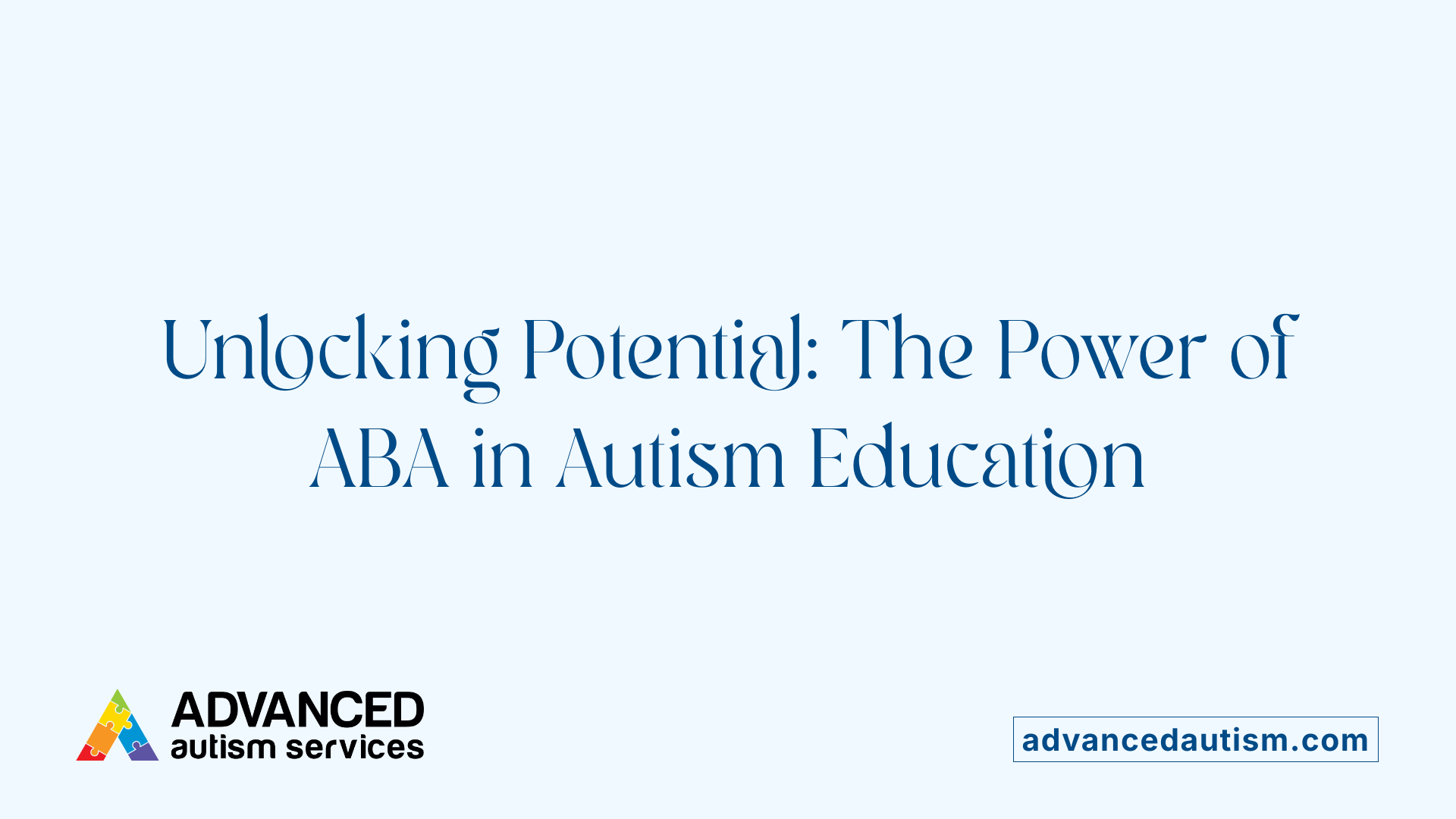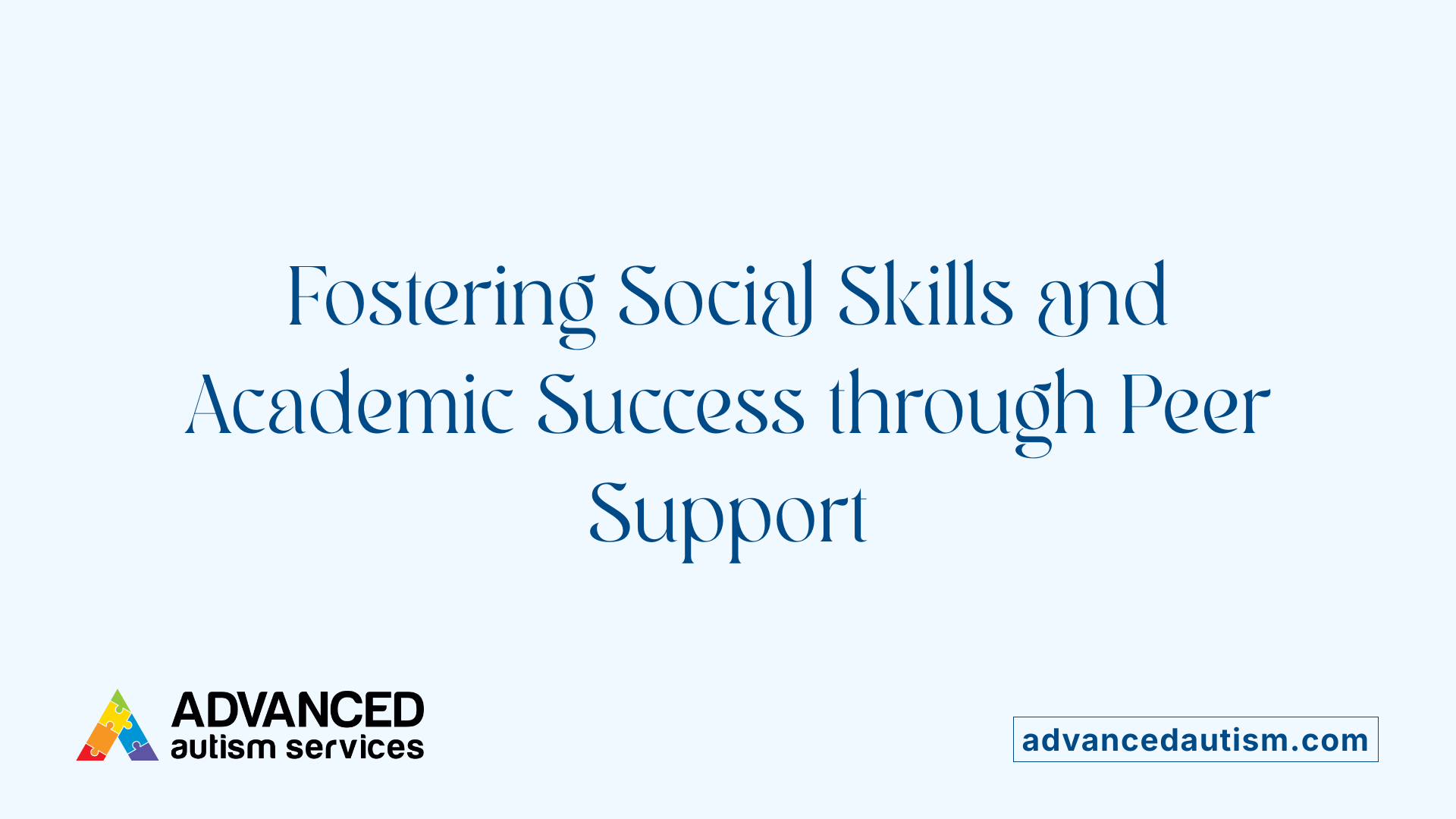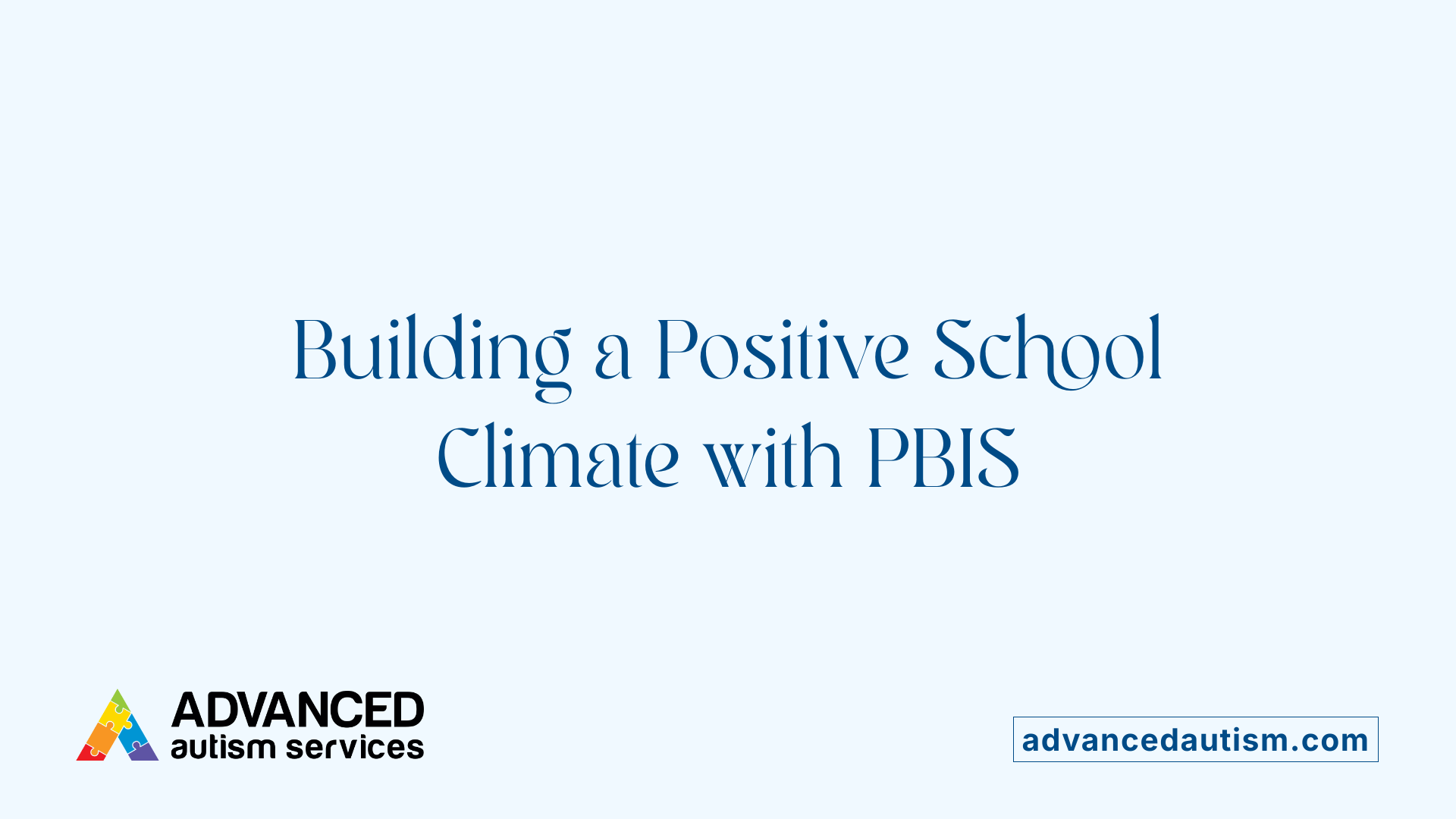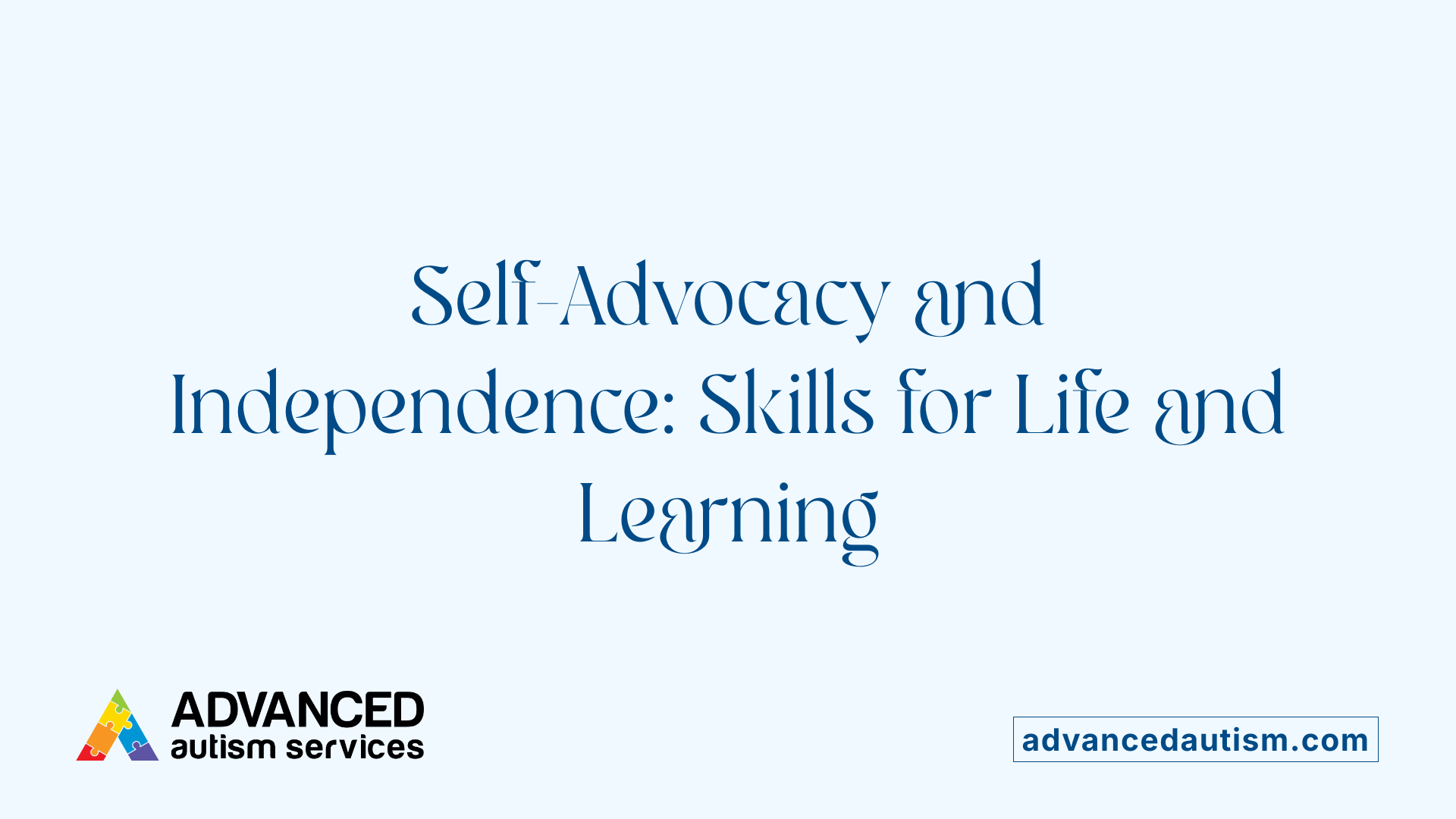Bridging Behavioral Science with Education
Supporting academic success for children with autism requires a comprehensive approach that integrates evidence-based behavioral interventions within educational settings. These strategies not only address academic skills but also crucial social and communication needs, fostering a supportive environment where each child can thrive. This article explores how targeted behavioral methodologies, including Applied Behavior Analysis (ABA), peer-mediated instruction, and Positive Behavioral Interventions and Supports (PBIS), create pathways for enhanced learning and inclusion.
Understanding ABA Therapy and Its Role in Autism Education

What is ABA therapy and how does it help individuals with autism?
ABA (Applied Behavior Analysis) therapy is a scientifically supported treatment focused on understanding and modifying behavior through systematic assessment and intervention. It emphasizes increasing positive behaviors such as communication, social skills, and daily living skills, while reducing harmful or non-productive behaviors. This is achieved through strategies like positive reinforcement, prompting, and breaking complex skills into smaller, manageable steps.
How ABA supports skill development in autism
ABA therapy helps individuals with autism by tailoring interventions to their unique needs, considering factors like learning styles, communication abilities, and sensory sensitivities. It promotes skill acquisition by teaching behaviors in various environments to ensure generalization and maintenance over time. Additionally, ABA empowers students with self-management, self-advocacy, and problem-solving skills, fostering independence and confidence.
Settings and providers of ABA therapy
ABA can be implemented in multiple settings including homes, schools, and clinical environments. Integrating ABA therapy in schools supports consistent learning and social inclusion. Successful implementation involves a collaborative team approach, professional development for educators, individualized behavior plans, visual supports, reinforcement systems, and family involvement to maintain consistency across home and school environments.
Providers of ABA Therapy: Expertise Behind the Intervention
Who provides ABA therapy services?
ABA therapy is delivered by skilled professionals specializing in behavior analysis. The main providers include Board Certified Behavior Analysts (BCBAs), who design and oversee treatment programs, and Registered Behavior Technicians (RBTs), who implement direct therapy under the supervision of BCBAs. These specialists use systematic observation, data collection, and positive reinforcement techniques to support individuals with autism and related behavioral challenges.
Settings and accessibility for ABA therapy
ABA services are versatile and can be offered across multiple environments, such as in-home sessions, schools, clinics, and community settings. This flexibility ensures that therapy is accessible and tailored to each individual's natural surroundings, promoting skill generalization. Families typically coordinate with healthcare providers or programs specializing in ABA to obtain referrals and evaluate insurance eligibility, such as through providers like Molina Healthcare.
Collaboration with families and healthcare
Successful ABA interventions depend heavily on collaboration among therapists, families, educators, and healthcare professionals. Sharing information and strategies ensures consistency between home, school, and clinical settings, which enhances progress and maintenance of learned skills. Care teams work closely with families to adapt interventions, address unique needs, and empower caregivers with tools to support ongoing growth.
| Role | Description | Setting Examples |
|---|---|---|
| Board Certified Behavior Analyst (BCBA) | Develops individualized treatment plans and supervises therapy | Clinics, Schools, Homes |
| Registered Behavior Technician (RBT) | Delivers therapy sessions under BCBA guidance | Homes, Schools |
| Families | Provide essential support and reinforcement outside therapy | Home |
This multidisciplinary approach ensures ABA therapy is delivered effectively, fostering positive behavioral change and improved developmental outcomes.
Measuring the Impact of ABA in Educational Settings
How is the effectiveness of ABA therapy measured in autistic individuals?
Effectiveness in ABA therapy is carefully measured through ongoing, systematic assessment of a student's progress on specific goals. These goals typically cover areas such as communication skills, social interaction, and reduction of challenging behaviors. Teachers and therapists collect detailed data to monitor improvements and inform adjustments to the intervention plan.
Data-driven assessment of progress
Data collection is fundamental in ABA. It involves recording performance frequently to capture changes over time. This approach supports objective evaluation of behavioral improvements and helps identify which strategies are working best. Graphing results is a common practice used to visualize trends and make data-driven decisions.
Standardized tools and frameworks
To ensure consistency and reliability, educators and clinicians often use established tools like the BHCOE ABA Outcomes Framework™. This framework guides professionals in selecting valid measures that align with evidence-based criteria. Additionally, tools like the POP-C assist in making informed decisions about treatment intensity based on the individual’s symptom presentation and progress.
Effect of treatment intensity and duration
Research shows that treatment dose and duration significantly impact outcomes. Longer and more intensive ABA interventions are associated with greater gains, especially in language and cognitive skills. Therefore, personalized treatment plans are developed, adjusting intensity to maximize learning and skill acquisition.
By combining regular data collection, standardized evaluation frameworks, and tailored treatment intensity, ABA therapy effectiveness is continuously monitored and refined to support each child's development.
Peer-Mediated Instruction: Harnessing Social Learning for Academic Growth

What is Peer-Mediated Instruction and How Does it Benefit Students?
Peer-Mediated Instruction (PMI) is an educational strategy where peers actively support the learning and social development of students, particularly those with autism spectrum disorder (ASD). By involving classmates as tutors or partners, PMI promotes both academic skills and social engagement, leading to increased confidence and a greater sense of inclusion.
What Are Classwide Peer Tutoring and Peer-Assisted Learning Strategies?
Two prominent PMI methods include Classwide Peer Tutoring (CWPT) and Peer-Assisted Learning Strategies (PALS):
Classwide Peer Tutoring (CWPT): This method trains students through explanation, modeling, role-playing, and corrective feedback. Emphasizing reinforcement and behavioral principles, CWPT encourages practices such as role-switching between tutor and learner, reinforcement through praise or rewards, and tracking progress using graphs. CWPT has proven effective in subjects like math across diverse classroom settings.
Peer-Assisted Learning Strategies (PALS): PALS focuses on reading skills by pairing students for activities like partner reading, paragraph shrinking, and prediction relay games tailored to various grade levels. Like CWPT, it promotes peer interaction and uses reinforcement to enhance skill acquisition.
How Are PMI Strategies Implemented and What Evidence Supports Their Use?
Successful implementation involves explicit teaching and modeling of skills, role-playing opportunities, clearly defined rules, and structured reward systems. Regular peer role switching and active supervision maintain engagement, while progress is monitored through graphing and assessment.
Research consistently shows PMI leads to improved social interaction, better academic performance, and increased confidence among students with ASD. Both CWPT and PALS are endorsed as evidence-based practices by leading organizations such as the What Works Clearinghouse, underscoring their value in supporting academic success.
| Aspect | CWPT | PALS |
|---|---|---|
| Focus | Math and other subjects | Reading skills |
| Techniques | Explanation, modeling, role-play, feedback | Partner reading, paragraph shrinking, prediction relay |
| Key Features | Role switching, reinforcement, graphing | Peer interaction, reinforcement, tailored activities |
| Evidence-Based Status | Endorsed by What Works Clearinghouse | Endorsed by What Works Clearinghouse |
| Target Population | Students with and without ASD | Students with and without ASD |
Creating Inclusive Classrooms: Behavioral Strategies for Social and Sensory Support
How does modeling respectful behavior promote positive interactions?
Modeling respectful and appropriate behavior sets the tone for classroom interactions. When teachers demonstrate respect and engage students thoughtfully, it encourages students to mirror this behavior, fostering a positive, supportive learning environment.
How can 'About Me' sheets enhance understanding of each student?
Individualized 'About Me' sheets provide insights into each child's likes, fears, and needs. This tool supports teachers in tailoring behavioral strategies and communication approaches, ensuring that interventions align with each student's unique profile.
What strategies support students with sensory challenges?
Classrooms can be arranged thoughtfully to address sensory sensitivities. Careful seating arrangements minimize overstimulation and support focus, while visual cues and sensory accommodations, like quiet areas or fidget tools, create a more comfortable environment.
How can teachers facilitate social interaction and communication?
Creating a welcoming setting and encouraging peer interactions build social skills. Visual rules and social narratives clarify expectations, while positive directions and descriptive praise motivate students. Supporting communication through clear, concrete language and visual aids helps all students engage successfully.
Establishing Predictable Routines to Reduce Anxiety and Enhance Learning

Why Are Clear Routines and Advance Notices Important?
Clear, consistent routines help create a predictable environment where students know what to expect. This predictability reduces anxiety, which is often heightened by uncertainty or sudden changes. Providing advance notice of any changes allows students to mentally prepare, minimizing behavioral challenges during transitions.
How Do Visual Schedules and Supports Help?
Visual schedules use images or symbols to outline daily activities, making abstract concepts like time and sequence concrete and understandable. These supports offer a constant reference point for students, helping them anticipate upcoming tasks and transitions independently. For children with communication difficulties or sensory processing needs, visual cues provide clarity and reduce confusion.
How Can Transitions Be Supported to Reduce Behavioral Challenges?
Establishing and practicing routines around transitions is crucial. Predictable sequences combined with visual and auditory signals prepare students for changes in activity or setting. Structured routines paired with supportive strategies such as cue cards and clear instructions promote smoother transitions, thereby reducing anxiety-driven behaviors.
Together, these approaches foster a sense of security and promote independence, helping students engage more fully in learning activities and social interactions.
The Incredible Years Teacher Autism Program: Empowering Educators for Early Intervention
Focus on preschool-aged children
The Incredible Years Teacher Autism program is specifically designed for preschool teachers working with children aged 2 to 5 years. This early intervention targets foundational developmental areas crucial for young learners on the autism spectrum.
Promotion of language, social interactions, and self-regulation
The program emphasizes strategies to enhance language development, foster social interactions, and build emotion literacy alongside self-regulation skills. Teachers are guided to 'get into the child's spotlight' by engaging interests to promote communication and social engagement effectively.
Use of structured routines and visual aids
Structured routines are central to the program, supported by visual schedules and tailored instruction. Visual aids such as cue cards help children comprehend instructions clearly, reducing anxiety and promoting independence.
Collaboration with families and ongoing teacher support
Collaboration between educators, families, and professionals is a vital component, ensuring consistent strategies across home and school. Additionally, the program offers ongoing training, including manuals, visual resources, and videos, to support and empower teachers in implementing evidence-based intervention techniques effectively.
Positive Behavioral Interventions and Supports (PBIS): School-Wide Strategies for Success

What is the framework and tiered structure of PBIS?
Positive Behavioral Interventions and Supports (PBIS) is a comprehensive school-wide approach that focuses on promoting positive behavior and social-emotional learning. It is structured into three tiers to address varying levels of student needs:
- Tier 1 (Universal): Applies to all students with basic rules and expectations.
- Tier 2 (Targeted): Provides additional support for students who require more guidance.
- Tier 3 (Intensive): Offers individualized and intensive interventions for students with significant behavioral challenges.
This tiered model ensures that support is tailored appropriately while fostering a positive school culture for everyone.
How does PBIS replace problematic behavior with positive communication?
PBIS views behavior as a form of communication. Rather than focusing on punishment, it emphasizes reinforcing positive behaviors to replace problematic ones. This approach promotes understanding and respect, helping students learn how to express their needs and emotions constructively.
What role do consistent routines, clear expectations, and gentle corrections play?
Implementing consistent routines and clear expectations provides students with a predictable environment, reducing anxiety and confusion. When behavioral violations occur, corrections are delivered gently, directly, and consistently, emphasizing replacement behaviors rather than punishment. This supportive method encourages steady behavior improvement and positive social interactions.
How are data collection and monitoring progress integrated?
Regular data collection is vital to PBIS's success. Schools systematically monitor student behavior and the effectiveness of interventions to ensure progress. This data-driven approach allows educators to modify strategies as needed, enhancing the overall impact of behavioral supports within the school.
| Tier Level | Description | Purpose |
|---|---|---|
| Tier 1 | Universal supports for all students | Establish basic rules and expectations |
| Tier 2 | Targeted support for some students | Address additional behavioral needs |
| Tier 3 | Intensive individualized support | Help students with significant challenges |
| Strategy | Description | Benefit |
|---|---|---|
| Positive communication | Reinforces good behavior to replace problem behaviors | Encourages constructive expression |
| Consistent routines | Predictable schedules and rules | Reduces anxiety and increases clarity |
| Gentle corrections | Direct yet kind reminders of behavior expectations | Supports respectful behavior change |
| Data monitoring | Tracks behavior and intervention outcomes | Allows tailored, effective interventions |
Empowering Students With Autism: Teaching Self-Management and Advocacy Skills

Developing Self-Advocacy and Problem-Solving Skills
Teaching students with autism to advocate for themselves is a crucial step toward fostering independence. ABA therapy supports this by guiding children in setting personal goals, identifying their strengths and challenges, and learning effective problem-solving strategies. These skills empower students to communicate their needs and navigate social and academic situations more confidently.
Fostering Independence and Confidence
By breaking down complex tasks into manageable steps and using reinforcement systems, students can build competence over time. Structured routines, visual supports, and consistent feedback promote self-regulation, enabling learners to manage their behaviors and emotions independently. This process cultivates a sense of autonomy and boosts self-confidence.
Promoting Peer Awareness and Inclusion through ABA
ABA programs emphasize creating a culture of empathy and respect within the classroom. Strategies such as peer-mediated interventions and respectful discussions help peers understand and accept differences, thereby enhancing social inclusion for students with autism. Encouraging collaboration and positive interactions among students nurtures a welcoming environment where all learners can thrive.
Integrating Behavioral Interventions for Lasting Academic Success
Achieving academic success for children with autism is most effective when multiple behavioral interventions are thoughtfully integrated within the educational setting. ABA therapy, with its data-driven, individualized focus, underpins many of the strategies that foster skill acquisition and independence. Complementary approaches like peer-mediated instruction and PBIS extend support to social and behavioral domains, promoting inclusive learning environments. Structured routines, sensory accommodations, and teacher empowerment programs like The Incredible Years ensure that instruction meets the diverse needs of students. Collaboration among professionals, families, and peers is crucial to sustaining progress and generalizing skills beyond the classroom. Together, these approaches offer a comprehensive roadmap to unlock each child's potential and support their academic and social success.
References
- Autism in the classroom: Strategies for success
- Utilizing Peers to Support Academic Learning for Children ...
- Effective Classroom Strategies for Teaching Students with ...
- Integrating ABA Therapy in Schools: Strategies for Success
- Positive Behavioral Interventions and Supports (PBIS) for ...
- Applied Behavior Analysis (ABA)
- Autism Services
- BHCOE Gives Autism Field a Needed Boost in Measuring ...
- A Tool for Determining Treatment Dosage in Applied ...
- An evaluation of the effects of intensity and duration on ...



